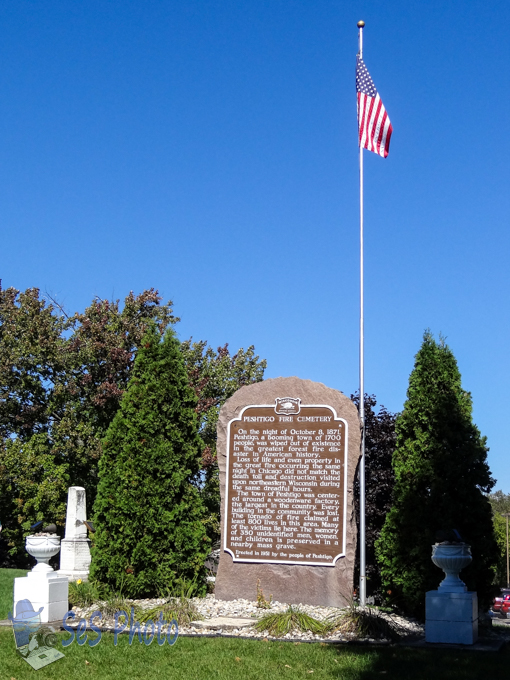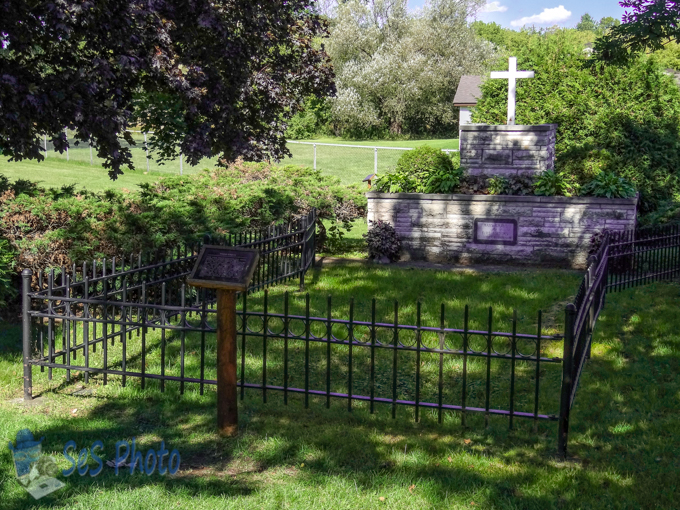The Great Chicago Fire, burned from October 8 to October 10, 1871, and destroyed thousands of buildings, killed an estimated 300 people but a more deadly fire also happened on that October 8 further north in Wisconsin. The town of Peshtigo was wiped out by a firestorm with a wall of flames a mile high and five miles wide traveling at 100 miles per hours which was hot enough to turn sand into glass. With over 1,875 square miles consumed by the fire that caused the most deaths by fire in United States history, with estimated deaths of around 1,500 people, possibly as many as 2,500. An accurate death toll has never been determined because local records were destroyed in the fire.
Very little survived the fire, but Father Pernin grabbed the tabernacle from St. Mary’s Church and pushed the wagon into the river as he spent six hours in the water. The next day the priest didn’t know what became of the tabernacle until a parishioner, who also survived, told him to follow him.
“I hurried with him to that part of the river into which I had pushed as far as possible my wagon containing the wooden tabernacle,” Father Pernin wrote. “This wagon had been blown over on its side by the storm; whilst the tabernacle itself had been caught up by the wind and cast on one of the logs floating on the water. Everything in the immediate vicinity of this spot had been blackened or charred by the flames; logs, trunks, boxes, nothing had escaped, yet, strange to say, there rose the tabernacle, intact in its snowy whiteness, presenting a wonderful contrast to the grimy blackness of the surrounding objects.” Father Pernin left the tabernacle where it had been found for two days, “so as to give all an opportunity of seeing it . . . The Catholics generally regarded the fact as a miracle, and it was spoken of near and far, attracting great attention.”
Peshtigo Fire Survivor





